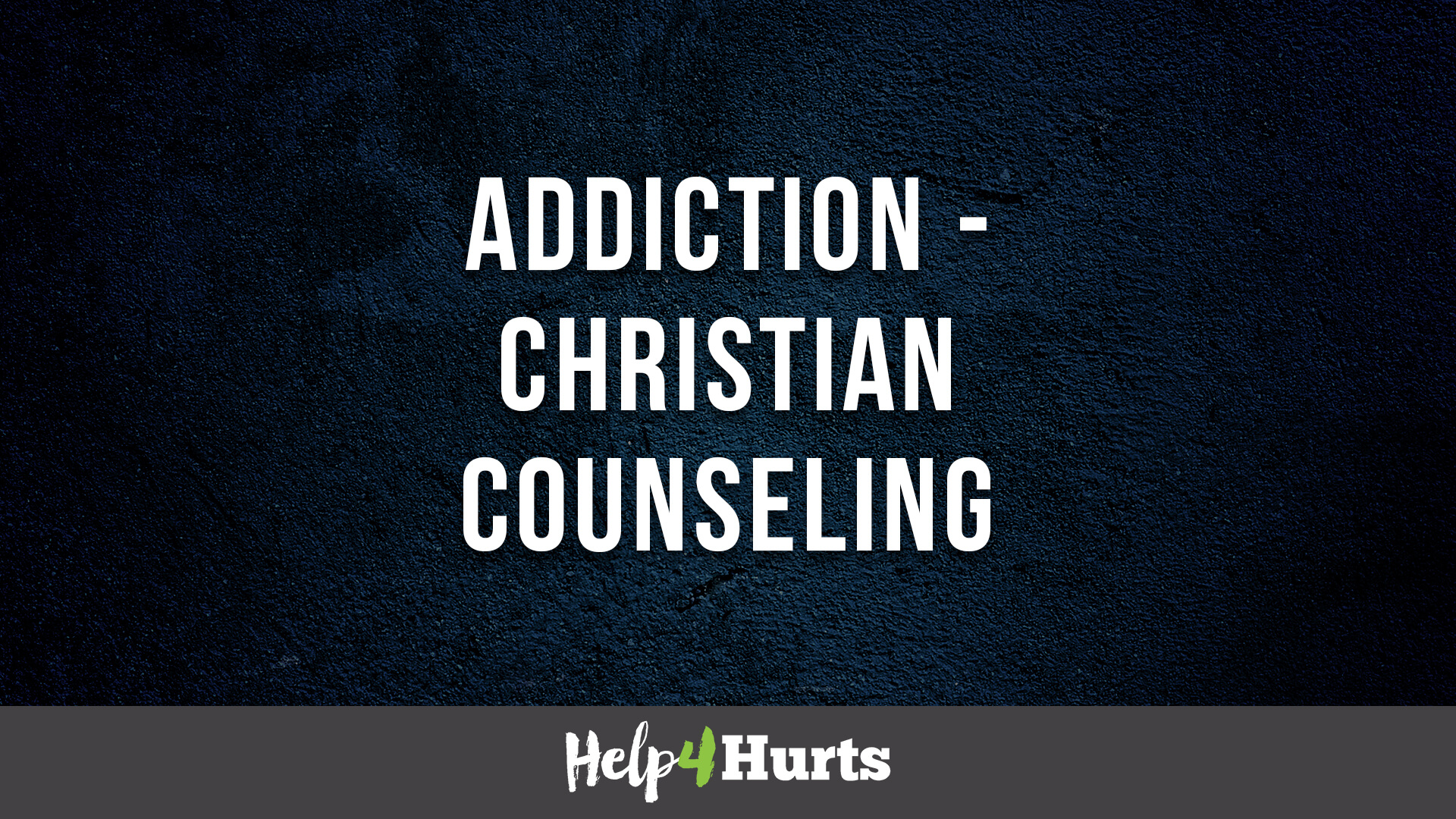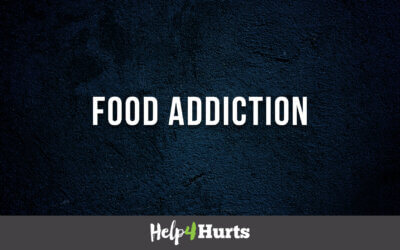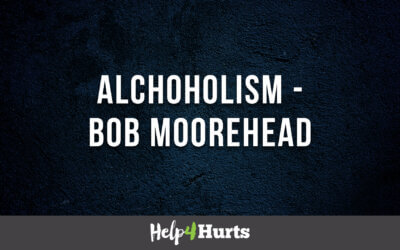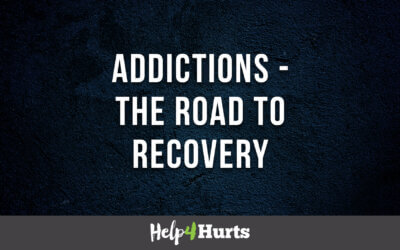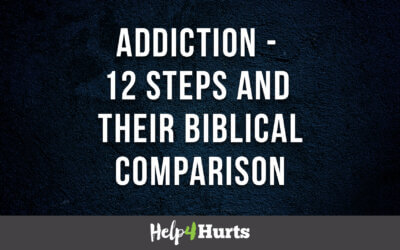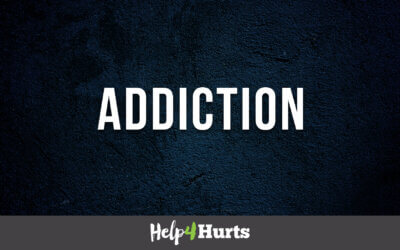In many societies, but especially our own, thousands of individuals are addicted to alcohol, drugs, television, compulsive spending, sexual immorality, smoking, overeating, and a host of other behaviors. Workaholism (the addiction to work) has almost become a badge worn proudly by those who want to be successful. Eating disorders, a specialized form of addictions, have become a major concern within the past decade. Some people seem addicted to politics, to physical fitness, and even to religion.
An addiction is any thinking or behavior that is habitual, repetitious, and difficult or impossible to control. Usually the addiction brings short-term pleasure, but there may be long-term consequences in terms of one’s health and welfare. (Some have called this short-term gain with long-term pain.)
Addictions tend to be progressive conditions that slowly exert more and more power and control over the individual. With many addictions, the control is both psychological and physical. The addicted person may agree that the condition is harmful but stopping seems to be impossible. Even after difficult detoxification, the drug addict often returns to the needle. Even after repeated medical warnings, the smoker may continue to puff on two packs a day or the obese person continues to overeat and shun exercise. even in the midst of increasing sickness and dehydration, the anorexic fails to eat. The workaholic continues a self-driving lifestyle even after a near-fatal heart attack.
Psychologist William Lenters has highlighted the complexity of addictive behavior: “The questions are many and puzzling. Addiction to what? Is addiction a disease? Is it a sin? Is it a psychological abnormality? Does it point to a personality anomaly? A genetic mix-up? Are addicts morally responsible for their frequent foul-ups? Is addiction a case of obsessive-compulsive behavior? Or is it just an excuse for antisocial behavior? What causes one person to become addicted to beverage alcohol while his biological brother does not? Is ever addiction harmful? What about the so-called positive addictions?
 The Bible condemns drunkenness and alcohol abuse but makes no specific references to drug abuse, eating disorders, workaholism, or most other addictions that concern us today. Nevertheless, biblical principles such as the following can apply to the issue of addiction:
The Bible condemns drunkenness and alcohol abuse but makes no specific references to drug abuse, eating disorders, workaholism, or most other addictions that concern us today. Nevertheless, biblical principles such as the following can apply to the issue of addiction:
- Don’t Be Mastered by Anything. It is possible to become enslaved even by actions that are permissible and not bad in themselves. In stating his determination not to be mastered by anything, Paul mentions food and sex, both of which are good in themselves but sometimes abused. In addition, the apostle criticizes people who are sexually immoral, greedy, idolaters, drunkards, and in other ways mastered by behavior that they fail to control.
- Do Obey the Law. The Bible instructs us to be law-abiding citizens. It is wrong, therefore, to buy, sell, condone, possess, or use any drug illegally. Violence, drunken driving, criminal actions, and other illegal acts are wrong even if they are the actions of one who is addicted.
- Don’t assume that drugs or other addictions resolve problems and reduce tensions. Stress is one of the major causes of addictions. When pressures build some a sense that all is well. Others get involved in work, hobbies, or recreational pursuits that distract them from stress. Temporarily these behaviors may help a person avoid responsible stress management, but ultimately the stresses cry for attention and the developing addictions no longer provide relief. Instead the addictions create additional stress. People may try to escape from their problems through drugs, work, sexual fantasy, hyperactivity, compulsive eating, or other addictive behavior, but all of this fails to acknowledge the scriptural directive to bring our burdens to Christ where we can face them squarely and deal with them directly.
- Do keep the body pure. The Holy Spirit dwells in the body of each Christian, and for this reason we must do whatever we can to keep our bodies free of pollutants, including drugs, excessive amounts of food, lustful thoughts, and immoral sexual behavior. Every human body was made by God, and the Christian body belongs to him both because of divine creation and because of divine redemption. Scripture and common sense tell us, therefore, that we should take care of ourselves so that we can glorify God with our bodies.
- Don’t expect to come to God through drugs. Several years ago a controversial book (written by a seminary professor) argued that psychedelic drugs can offer a superior route to discovering truth and entering into a meaningful religious experience. This conclusion denies the fact that we come to God only by way of Jesus Christ, and that we are to come with clear minds rather than brains that are drugged by addictive substances.
- Do practice temperance, self-discipline, and self-control. These characteristics are prominent in the list of qualifications for Christian leaders, but they apply to nonleaders as well. All believers are expected to say no to ungodliness and worldly passions, “and to live self-controlled, upright and godly lives.” Self indulgence and selfish ambition are condemned; self-control is commanded and listed as one of the fruits of the Spirit. Gluttony (which could involve addiction to eating), greed (which might involve addiction to possessions and material things), and lust (which could lead to sexual addiction) are all warned against and condemned.
- Don’t get drunk. Drunkenness is clearly and explicitly condemned in Scripture and called a sin. Would it be consistent with Scripture to extend this clear prohibition against alcohol and suggest that it could guide our response to other harmful addictions? We should not become drunk or addicted to any chemical substance or other addictive influence.
- Do be filled with the Spirit. 5:18 instructs us to avoid drunkenness and be filled instead with the Holy Spirit. A life controlled by the Spirit is presented in the Bible as superior to any alternative, including a life filled with chemical or other addictions.

There is nothing new about the problem of addiction and neither is this limited culturally. At different times and in a variety of geographical areas, addictions have enjoyed passing popularity. Alcohol abuse, for example, may be more prevalent now than it was a few years ago. Glue sniffing has ceased to be of great importance, but crack, a highly addictive and dangerous form of cocaine, has become a major source of addiction, especially when it is used in combination with alcohol. Throughout recorded history and in countries all over the world, a percentage of every population has had serious problems with drug abuse and other types of addiction.
Some of the causes of alcoholism: physiology and heredity, harmful environments (including one’s home life, peer pressures, and cultural-ethnic mores), present stress, spiritual influences, and circumstances that keep the addiction alive and growing once it gets started. All of these influences can contribute as well to the nonalcoholic addictions.
In addition, substance abuse, eating disorders, and other addictive behaviors appear to have unique causes.
- Causes of substance abuse. George Mann, medical director of the Johnson Institute of Minneapolis, a center for understanding and treating chemical addictions, has written that all addictive chemicals have one thing in common: they change moods. Some mood changes are very potent and highly addictive; others are much less powerful. According to Mann, and as shown in table 33-1, drugs can be placed on a scale ranging from those with the highest potential for addiction to those with lowest potential.
Almost any person can become psychologically and/or physically dependent on drugs if that person is exposed to a high dosage for a long enough period of time. With a drug like heroin the time may be short and the effects are both fast and very dangers; with caffeine the time is longer and the effects are almost negligible.
There is nothing new about the problem of addiction and neither is this limited culturally. At different times and in a variety of geographical areas, addictions have enjoyed passing popularity. Alcohol abuse, for example, may be more prevalent now than it was a few years ago. Glue sniffing has ceased to be of great importance, but crack, a highly addictive and dangerous form of cocaine, has become a major source of addiction, especially when it is used in combination with alcohol. Throughout recorded history and in countries all over the world, a percentage of every population has had serious problems with drug abuse and other types of addiction.
Some of the causes of alcoholism: physiology and heredity, harmful environments (including one’s home life, peer pressures, and cultural-ethnic mores), present stress, spiritual influences, and circumstances that keep the addiction alive and growing once it gets started. All of these influences can contribute as well to the nonalcoholic addictions.
In addition, substance abuse, eating disorders, and other addictive behaviors appear to have unique causes.
- Causes of substance abuse. George Mann, medical director of the Johnson Institute of Minneapolis, a center for understanding and treating chemical addictions, has written that all addictive chemicals have one thing in common: they change moods. Some mood changes are very potent and highly addictive; others are much less powerful. According to Mann, and as shown in table 33-1, drugs can be placed on a scale ranging from those with the highest potential for addiction to those with lowest potential.
Almost any person can become psychologically and/or physically dependent on drugs if that person is exposed to a high dosage for a long enough period of time. With a drug like heroin the time may be short and the effects are both fast and very dangers; with caffeine the time is longer and the effects are almost negligible.
There is nothing new about the problem of addiction and neither is this limited culturally. At different times and in a variety of geographical areas, addictions have enjoyed passing popularity. Alcohol abuse, for example, may be more prevalent now than it was a few years ago. Glue sniffing has ceased to be of great importance, but crack, a highly addictive and dangerous form of cocaine, has become a major source of addiction, especially when it is used in combination with alcohol. Throughout recorded history and in countries all over the world, a percentage of every population has had serious problems with drug abuse and other types of addiction.
Some of the causes of alcoholism: physiology and heredity, harmful environments (including one’s home life, peer pressures, and cultural-ethnic mores), present stress, spiritual influences, and circumstances that keep the addiction alive and growing once it gets started. All of these influences can contribute as well to the nonalcoholic addictions.
In addition, substance abuse, eating disorders, and other addictive behaviors appear to have unique causes.
- Causes of substance abuse. George Mann, medical director of the Johnson Institute of Minneapolis, a center for understanding and treating chemical addictions, has written that all addictive chemicals have one thing in common: they change moods. Some mood changes are very potent and highly addictive; others are much less powerful. According to Mann, and as shown in table 33-1, drugs can be placed on a scale ranging from those with the highest potential for addiction to those with lowest potential.
Almost any person can become psychologically and/or physically dependent on drugs if that person is exposed to a high dosage for a long enough period of time. With a drug like heroin the time may be short and the effects are both fast and very dangers; with caffeine the time is longer and the effects are almost negligible.
The Potential for Addiction
Highest Heroin
| Morphine
| Demerol
| Cocaine
| Barbituates
| Amphetamines
| Alcohol
| Tranquilizers-minor
| Sleeping pills
| Codeine
| Bromides
| Nicotine
| Marijuana
Lowest Caffeine
Life could be divided into four general categories: family life, social life, vocational life, and spiritual life. When a chemical interferes with the productivity, tranquility, efficiency, or well-being of any of these areas, and when a person is made aware that this is happening but still persists in using the chemical, then that person is addicted, at least psychologically. If one gets physically ill when the drug is withdrawn, then there is a physical addiction as well.
What causes this addiction? Perhaps there is a combination of several influences.
- Parental and other adult examples. We live in a society of pill takers. Early in life most children become well acquainted with medicines that take away pain and make one feel better. Teenagers watch parents consume aspirin, cold tablets, sleeping medications, and a host of other drugs. Millions of people relax with coffee, a cigarette, or a drink before dinner. When problems arise, tranquilizers are available to calm our nerves. It isn’t surprising that young people follow this adult example and, in turn, perpetuate the idea that drugs are the first line of defense against physical and psychological pain.
Few people would assume that drugs in themselves are bad. Their medicinal value is well known and even accepted by biblical writers. Most people would see no harm in the occasional use of mild stimulants, pain relievers, or relaxation-producing drugs. Even mild drugs, however, can become addiction, sometimes as a result of parental example. If parents take a pill or a drink to calm down in times of stress, is it surprising that their children do the same? If the drug affects the children like it calms the parents, then drug use becomes reinforcing, and the substance is likely to be used again, perhaps with increasing frequency and in greater quantities.
Many substance abusers come from homes where drugs are not misused, but this does not deny the importance of parental example. A high percentage of teenage and adult addicts (especially those who use hard, highly addictive drugs) have grown up in homes where addiction and family instability are common.
- Peer and other social influences. Individuals in our society, especially young people, live in a world that is permeated by drugs. Why do some people use these drugs while others do not? Several theories try to answer this question and explain drug abuse.
Disease-addiction theories maintain that otherwise healthy people experiment with a drug (perhaps in response to curiosity or peer pressure) and become addicted physically, so that drug abuse becomes a disease. There seems to be little evidence to support the idea that we inherit tendencies to become addicted to nonalcoholic drugs.
Gateway theories suggest that use of one drug becomes a stepping stone to drugs that are more harmful. A young person, for example, may start with cigarettes and beer, then move to marijuana and on to more addictive drugs. The theory fails to say, however, why some make this progression and others do not.
Social theories conclude that race, age, socioeconomic status, the neighborhood where one lives, educational level, peer influences, and similar issues can combine to determine if one takes drugs, what drugs are likely to be used, how the habit is supported financially, and whether or not the drug use will continue.
Psychological theories look within the drug user to see if personality traits, psychological stresses, inner conflicts, hidden fears, or individual needs contribute to drug abuse. Many drug users do have inner tensions and frustrations. Some look for experiences, including drug experiences, that will bring excitement, stimulation, intoxication, and feelings of freedom from the worries and problems of life. Still, it is not clear why some distressed people turn to drugs but many others do not.
Psychosocial theories suggest that some people are problem prone because of personality, environment, stresses, or other influences. Many problem-prone people turn to drugs, especially if they are readily available, but others develop different problems.
Peer-Cluster theory draws from the above and assumes that when a young person uses drugs,
it is almost always a direct reflection of the peer group. Friends, acquaintances, and siblings provide drugs and teach the young person how to use them. Peers shape attitudes about drugs, provide the social contexts for drug use, and when young people share their ideas, help form the rationales that the youth uses to explain and excuse drug use. Eventually small groups form and the members use drugs together at particular times and places and share the same ideas, values, and beliefs about drugs. These groups are peer clusters: tight, cohesive groupings – in which clearly defined attitudes and shared behaviors mark membership.
Peer clusters are not limited to teenagers. When the neighbors get together for coffee or employees take a break from work, there often is pleasant conversation and relaxation, accompanied by eating, drinking coffee or soft drinks, and perhaps smoking. The consumption is reinforced by the accompanying social interactions. When the get togethers include drinking beer or hard liquor, or when nicotine is replaced by more addictive drugs, then pleasant peer interaction moves into more dangerous substance abuse.
All of this suggests that there are multiple causes of drug abuse: physical, familial, social, environmental, psychological, and spiritual. Each of these must be kept in mind when we begin counseling with substance abusers.
- Causes of Eating Disorders. Many people, at least in some parts of the West, seem to have continual concerns about weight. It is impossible to know how many people are on diets, thinking about going on diets, or concerned because they are putting weight back on following a diet. Dozens and perhaps hundreds of diets, including some that have a Christian basis, are embraced enthusiastically, tried with varying degrees of faithfulness, and most often found to be useless. According to one writer, “if ‘cure’ from obesity is defined as reduction to ideal weight and maintenance of that weight for five years, a person is more likely to recover from most forms of cancer than from obesity.”
Obesity and other eating disorders involve one’s physical condition. For this reason, it is crucial to have medical diagnosis to treat people physically, but counseling is likely to be more effective when we have at least a minimal understanding of the physiological aspects of the three most often encountered eating disorders: obesity, anorexia nervosa, and bulimia.
- A person is obese, according to the most accepted definition, if his or her body weight is at least 20% greater than the weight listed in the standard height-weight tables. This is an approximate measure, and one physician suggests that the “eyeball test” is betters: if a person looks fat, the person is fat. The obese person accumulates fat by eating more calories than are used up through energy. Why does this happen to so many people? The answers are both physiological and psychological.
Physiological causes are of at least two types. External influences are issues over which eaters have control, including what we eat, how much we eat, and how much exercise we get. All of these have a bearing on weight. In contrast, the internal influences are largely beyond one’s control and include genetic variables, fat cell size or size of stomach and intestines.
Psychological causes center around habits and other learned behavior. Gregarious people who like to eat and drink when they get together tend to add weight. According to one study, the obese have a higher-than-average need to spend time with family and friends. When others aren’t around, overweight people reward themselves with food.
Many of us tend to eat more when we are under stress, feeling sorry for ourselves, angry, anxious, guilty, bored, depressed, or watching television. During withdrawal from smoking, people tend to crave and eat more carbohydrates. Such behavior may have both physiological and psychological causes. Some evidence suggests that children who are told to clean their plates develop lifelong habits of overeating even when they have had enough or don’t feel hungry. All of this suggests that overeating can result from a variety of learned and emotional influences.
- Anorexia Nervosa. The first report of this condition was published in 1689, but it was not until the 1980s that anorexia leapt into prominence. The condition, which appears most often in females, is an eating disorder characterized by continual preoccupation with body weight and food. The anorexia often concludes that she is overweight, goes on a diet, and doesn’t stop. As a result, there is dangerous weight loss (sometimes hastened by induced vomiting, abuse of laxatives, and excessive exercise), hyperactivity, an inaccurate perception of one’s own body (the anorexic often considers herself fat despite considerable evidence to the contrary), and physical illness including menstrual irregularities, chemical deficiencies, weakening of the heart, and sometimes death.
- Closely related to anorexia, bulimia involves recurring episodes of eating (gorging or binging may be more accurate words) large quantities of food, followed by self-induced vomiting and feelings of guilt, depression, and self-disgust. Most bulimics are afraid of fat, many follow their binging with fasting or laxatives, and in time there can be fluctuating weight and serious health problems. For reasons that are not completely understood, bulimics often come from families that have a history of alcoholism and many also have drug and alcohol problems.
Raymond E. Vath is a Christian psychiatrist and leading expert on eating disorders. His patients all tend to show, in greater or lesser degrees, eight common characteristics. This list describes what the patients are like, but it also sheds light on the causes of anorexia nervosa and bulimia.
Perfectionism refers to the patients’ unreasonable standards or expectations of themselves. Many of these young people come from homes where the standards are high, attractiveness (including a slim figure) is highly valued, overweight people are viewed negatively, weight is assumed to be under voluntary control, dieting is praised, achievement is prized, and the parents are often successful and expect the same in their children.
Eating disorders are more common among professionals that emphasize trimness (dancers, figure skaters, models, gymnasts, or actresses) and in places, such as college dorms, where there is competition and emphasis on dating. Perhaps it is not surprising that many anorexics and bulimics exert unusual effort in their attempts to attain the high standards that they have seen in their families and set for themselves.
Low self-esteem often comes because the individual cannot meet the excessive standards and as a result feels worthless, unlovable, and alike a failure.
Sexual identity confusion involves uncertainty about what it means to be a mature woman (or man). Often these people have poor sexual adjustment and sometimes there is a history or promiscuity.
Numerous women, including many bulimics, seem confused about the relative importance of professional success and personal beauty. The messages that come from parents, teachers, and the media are confusing: work hard at school but be popular and pretty, be a professional but show that you are feminine. Fascination with physical fitness and the desire to look trim and healthy can focus attention on one’s body and create confusion about how this relates to purpose in life.
Recent writers have noted that this sex-role confusion and emphasis on both appearance and physical fitness is now becoming of greater importance to men. If this continues, more and more males develop eating disorders.
Depression results when people cannot reach their high ideals. The inability to achieve the aerobics instructor look, for example, may leave many people feeling defeated, ashamed, anxious, and depressed. Family example contributes to this depression. A high number of people with eating disorders come from families where one or more relatives have a history of depression.
Deception is a way to hide one’s failures and devious eating patterns. Often there is abnormal eating in private, sometimes food or laxatives are stolen, and induced vomiting is kept secret and often denied.
Power struggles come when the family discovers the illness and tries to force changes in eating patterns. Sometimes the family uses threats, criticisms, and punishment. This in turn meets with resistance and further deception.
Interdependency involves both the parents and the person with the eating disorder. The parents have high standards for their children and sometimes resist the normal process of separation. The children, in turn, want to break away but often are reluctant to leave. Many are exceptionally dependent on the parents for acceptance and affirmation.
Physiological problems come as a result of the eating disorder but also may be part of the cause. Women are genetically programmed to have a higher proportion of body fat than men. Differences in metabolic rate influence the efficiency with which calories are burned. These physical facts can create problems for people who live in a society that greatly values thinness.
- Causes of Behavior Addictions. Alcoholism, substance abuse, and eating disorders get most of the media and counselor attention, but thousands of people struggle with other, less common addictions. Many of these have no obvious physical cause. Instead they are behaviors that gain increasing prominence and are more and more difficult to control. Some people, for example, are addicted to work, physical fitness, sex, pornography, or stealing (kleptomania). Others have addictions to specific foods (such as chocolate), and many are addicted gamblers.
After the World Series of Poker at a casino in Las Vegas, the winner was asked what he planned to do with all the money. “Lost it,” he replied without hesitation. The man was admitting his addiction to gambling. Like all compulsive gamblers, he is unwilling and perhaps unable to resist the urge to gamble, even if this leads to heavy debt, loss of work, family problems, and personal stress. Often gamblers are arrested for embezzlement, forgery, income-tax evasion, or other illegal activities that provide funds to pay gambling debs and feed the addiction.
Why do they do it? There is no known cause. Gamblers are frequently intelligent people who thrive on danger, excitement, and uncertainty, but these may be interspersed with periods of depression, anxiety, and stress. Organizations like Gamblers Anonymous (GA) are successful in helping the people who stay with the group, but most drop out of the program and return to their gambling.
It is well known that addictions are not equally harmful. Alcoholism or anorexia nervosa are likely to be more dangerous than addiction to jogging, golf, or watching sports on television. Even so, any behavior that is compulsive and beyond the individual’s ability to control can be harmful.
This includes ones addiction that rarely is mentioned: addiction to religion. Some people it seems go to church regularly to get an emotional fix that keeps them high until the next service. What some observers have called “immature religion” or “sick religion,” is marked by rigidity, narrow-mindedness, unwillingness to associate with or learn from others, self-justification, and magical thinking. “A defensive posture is built into the rabid religiosity of the addict. The typical alcoholic reflects a similar attitude: the world is all wrong, but I am all right.”
Again it is clear that addictions result from a combination of influences. These include family background, past experiences, personality, present stress, individual needs, physical makeup, and the reinforcement or rewards that come as a result of the addictive behavior.

Addictions affect people in different ways; much depends on the individual, the circumstances, and the substance or behavior to which one is addicted. Drug abuse and alcohol addiction have different effects but both involve behavior change, physical deterioration, family stresses, financial problems, career destruction, and increasing psychological disintegration. Addiction to marijuana is much less destructive; however, the harmful effects of this drug has recently become more apparent. Caffeine dependence is even less harmful.
Although some people are able to withdraw from their addictions without help, most need professional guidance. Psychological and physical withdrawal symptoms can be very disruptive, but the effects of withdrawal depend on the addiction. It is easier to withdraw from caffeine than from nicotine; easier to quit smoking cigarettes than to stop using cocaine.
Addictions affect both the victim and his or her family. Families can be destroyed by an addict’s behavior, but families also contribute to the condition and sometimes, in their efforts to help, family members can make the addiction worse.
Similar conclusions could be reached about society. It is well known that drug abuse and crime often go together, causing pain to the victims and great detriment to local communities and the whole nation. On the national level addictions of all types contribute to the further loss of billions of dollars through absenteeism, declining work efficiency, failing health, and the high cost of treatment programs.
Most pathetic, however, are the shattered lives strewn in the paths that follow progressive addictions. Spiritual emptiness, broken bodies, destroyed relationships, ruined careers, dulled brains, and deep feelings of grief and guilt are all among the costs of addictions.
At times, even counselors get discouraged. “I have to limit my work with addicts,” one psychiatrist said recently. “The emotional drain of treating them can be almost more than I can handle.”
Counseling And Addiction
Various approaches have been used to treat addiction. These include family counseling, individual and group therapy, behavior therapy (to help people change and control behavior), and, of course, the medical treatment that helps individuals withdraw from the addictive substance and get treatment for the physical effects of the addiction. All of this takes large amounts of time and energy. Addicted people do get help and many escape from their addictions, but the failure rate is high and relapse is common.
According to one report, treatment fails when counselors lack proper training and experience, try to explore the abuser’s inner conflicts in the (mistaken) hope that this will end the abuse, and wait to begin counseling until detoxification is complete. It is better to be working with the family and significant other people along with the counselee, to encourage the counselee’s participation in self-help group programs, and to be both supportive and active in helping the counselee stay away from the addiction. If you are a Christian counselor who lacks training or expertise in working with the victims of substance abuse, eating disorders, or other addictions, try to find a professionally trained counselor and/or physician with whom you can work in helping the addict and his/her family.
The following paragraphs assume that medical treatment is being given, when necessary, along with the nonmedical counseling. Many of the counseling suggestions presented in our discussion of alcoholism, can also apply to the addictions discussed in this chapter.
- Counseling Substance Abusers. Have Christian counselors been reluctant to enter the arena of substance abuse counseling? One government report showed that most help for addicts comes from medical personnel who tend to focus on detoxification and chemical interventions or from former addicts who understand street life but know little about the principles of counseling and behavior change. Less than 5% of treatment personnel are psychologists. Despite the popularity of Teen Challenge, TOUCH, and other Christian substance-abuse programs, relatively few Christian counselors appear to be involved in drug rehabilitation efforts.
Some counselors may feel inadequate to help. Many believe, incorrectly, that substance abusers are unmotivated to change, nonresponsive to treatment, and always difficult to manage. In contrast, knowledgeable counselors find that treatment may be difficult, but it can also be successful. Often several approaches may be used. These include medical care, both individual and group counseling, drug education, residential therapy (this often means hospitalization), family counseling, and after-care services such as halfway houses or outpatient clinics. Some have noted that detailed diagnosis is important if counseling is to be effective. Others have emphasized the special needs of women substance abusers. Then there are those who suggest that counselees, especially those who are young, are not likely to be helped until the counselor knows about one’s peer clusters (where, when, and with whom drugs are used). Unless this influence can be changed, there may be little hope of changing drug involvement.
Substance abusers are best treated by a team of specialists who combine their areas of experience. In most cases, this combined treatment will include detoxification, education about abuse, support and counseling for the family, and helping the abuser live without drugs. Christians will be concerned about the counselee’s spiritual growth and there may be interest in following the seven steps to recovery proposed by one group of experienced counselors:
- Help the person admit “I can’t control drug use.”
- Encourage the counselee to “give up control of his or her life and place it in God’s hands.”
- Guide in self-examination, making sure to consider feelings of guilt and regret.
- Encourage the abuser to “let God change you”.
- Teach how one can live responsibly, without making excuses, but with accountability to others.
- Guide in spiritual growth.
- Show the person how to help others.
- Counseling and Obesity. The basics of weight loss are simple: reduce the intake of calories below what the body uses. To reach this goal, hundreds of diets have been developed. They appear in books, pamphlets, mimeographed sheets, and many women’s magazines. Diets are a core part of self-help groups such as Weight Watchers and TOPS. Within recent years weight-control clinics have sprung up all over the country offering behavior modification, inspiration, encouragement, and a variety of nutritional programs. Hospitals, individuals, counselors, and other professionals are all involved in helping people lose weight. Yet most of these efforts fail.
The goals of weight-loss programs are the same, and often they do help people shed pounds, at least temporarily. The weight, however, usually comes back and with each return it gets harder to lose again. Very few people, including those who follow diets proposed by Christian writers, appear to retain their reduced weights for a period of two or more years after dieting. Many will agree with the physician who called obesity “a chronic condition, resistant to treatment, and prone to relapse.”
In part, fighting obesity is difficult because the body resists weight loss and fights diets. If the caloric intake is too restrictive, the body (a) lowers its metabolism so that fewer calories are needed to maintain weight, (b) becomes more inactive in an effort to maintain body weight, (c) develops weight loss plateaus, and (d) causes the person to think more about food so consumption is harder to resist whenever food is available.
Effective weight loss is likely to be less difficult and more permanent when:
- People understand the physiological and psychological aspects of weight loss (since understanding helps reduce depression and guilt).
- Counselees learn principles of sound nutrition (this will reduce craving for missing foods and help teach principles for weight control after the diet).
- Diets are not so restrictive that they deny all foods that are desirable (this sometimes encourages binging and quick weight gain after the diet ends).
- There is a program of regular exercise to accompany dieting.
- There is a program of reinforcement to reward the counselee as weight-loss goals are met.
- Others give constant encouragement and support (including prayer support) during and after the weight-loss program.
- Psychological issues that may contribute to excess eating are reduced, often through counseling.
Most weight-loss programs are self-imposed and self-terminated. Success is likely to be better if the weight loss is supervised by a physician, nutritionist, or competent weight-lost specialist. This is true, especially, when there are likely to be medical complications, if the counselee is not in good health, or if one must lose a lot of weight.
- Counseling People with Anorexia and Bulimia. Eating disorders are complex conditions that often resist treatment and rarely respond to the interventions of inexperience counselors, even when their intentions are good. Most writers suggest a multi-method approach that may include some or all of the following.
- Medical Treatment. Eating disorders can do serious harm to the body; in time the physical changes can be life threatening. Competent medical treatment, therefore, is crucial.
People with eating disorders often do not see or accept the physical seriousness of the illness. Some will resist treatment or refuse to cooperate with the doctor. It is important to help these patients see that treatment will remove bothersome symptoms such as insomnia, fatigue, depression, and obsessive thoughts about food and weight.
- Behavior Change. The counselee needs to get control of the unhealthy eating behaviors, including the binge-purge cycles. Start by encouraging the counselee to keep a record of eating and binging behavior. Include information concerning what and how much is eaten. Where did the eating take place and when, and what emotions were experience at the time?
Based on this foundation data, the counselee and counselor together can work out rules for behavior control. These might include eating only at planned mealtimes, eating in the same location, and agreeing on the quantities that will be eaten. Sometimes counselees are encouraged to spend some time in prayer or relaxation before eating since this can reduce anxious, tension-filled eating. Agree that all-or-nothing thinking must be resisted. (This is the idea that “since I blew it by eating this one chocolate, I might as well go ahead and finish the whole box.”) These methods are designed to help the counselee control eating.
Often the counseling will reveal continuing stresses that lead one to lose control. When these are known, counseling can help people learn to cope with tensions and resist circumstances that might trigger healthy eating.
- Individual Counseling. Since eating disorders often stem from unhealthy attitudes, these must be changed through counseling. Counselees may need to reconsider their beliefs that “thin is beautiful,” that physical attractiveness is all important, or that perfectionism is desirable and attainable. Often counselees will need help with that perfectionism is desirable and attainable. Often counselees will need help with problems of sexual identity, parental relationships (including overdependency), depression, feelings of failure, or low self-esteem. Disordered eating is not likely to change until there is a removal of the personal problems and conflicts that lead to the disorder.
- Family Counseling. Since many disorders begin with attitudes coming from the family, and since many anorexics and bulimics have family problems, the family is best brought into the treatment process. Some research evidence shows that relapse is less likely when families are included in treatment and able to give support to people with eating disorders following the treatment.
- Group Counseling. Some but not all counselors advocate the group approach as an adjustment to other treatment. Within the group, participants can work on issues of self-esteem, interpersonal relations, unhealthy attitudes toward weight or eating, and other shared issues.
- Spiritual Counseling. One Christian writer has described starvation as “an extreme incorrect and unbiblical attempt to deal with various problems in life and is actually suicidal if it is not stopped. Often counselees need to learn biblically consistent ways to deal with parent-child relationships, sexuality, self-esteem, responsibility, worry, guilt, and similar issues. Eating disorders tend to reflect problems at a deeper level, and frequently this deeper level is spiritual.
- Counseling and Behavioral Addictions. Compulsive gambling, procrastination, workaholism, and other failures at self-control sometimes have a physical basis and need medical treatment. Attention-deficit disorders, for example, may result from chemical imbalances or neurological malfunctioning that make it difficult for some people to control behavior despite their best efforts and intentions.
More often, however, addictive behavior and lack of control have roots that are psychological, social, or spiritual. An old hymn urges Christians to “yield not to temptation, for yielding is sin. Each victory will help you some other to win.” Every time we yield, it is easier to give in at the next opportunity. Sinful behavior can become addictive behavior.
As an example, consider addictions to pornography or erotic lustful thinking. Unlike mature expressions of love within marriage, pornography and mental lust (like sexual perversions in general) do not require an intimate relationship with another human being. Erotic thinking, with or without pornographic stimulation, is an individual mental experience. This is thinking done alone. Often it is unrealistic highly idealized thinking, and frequently it is characteristic of individuals who are unable or unwilling to establish intimate nonsexual relationships with persons of the opposite sex. Sometimes the mental adulterer has been hurt in the past, is afraid of the opposite sex, or fears his or her ability to perform sexually. Sometimes the fantasies occur in the minds of happily married individuals who are too busy for frequent sex with their spouses. Others may be bored with a lifetime of the same old thing in sex. As a result, the individual engages in mental self-stimulation, pondering erotic behavior that never would be attempted in real life. When the erotica is in the mind, nobody else knows about it, and the fantasies grow without much restriction.
Like all addictions, erotic thinking grows because some need is not being met in a more effective, less addictive way. The need for communication and close contact with other human beings, for example, may have been replaced with fantasy. This fantasy is pleasant and not considered harmful (at least at the beginning), so the individual doesn’t try to stop. In time the lustful thoughts and/or use of pornography become increasingly frequent, there is greater withdrawal from others, and the person seems unable to abandon what has become a progressively compulsive habit.
What can be done to get out of this trap? Many behavioral addictions will yield to a three-part solution: determination, replacement, and need fulfillment.
- Addictive behavior will persist unless the individual determines to change. This is unlikely to be a one-time-only decision. Addictive behavior is pleasurable and relapse may be common even after repeated decisions to quit. Despite these failures, the counselee must be motivated to change or there will be little progress.
- Behavioristic psychologists have suggested several ways to find replacements for compulsive behavior and persisting thoughts. Thought stopping seems like a gimmick, but it works for many people. Whenever an unwanted thought comes to awareness, the individual thinks STOP and even says this out loud if nobody else is around. Thought switching follows. As soon as the undesired thinking is interrupted, quickly focus attention on something else. Sometimes this will be successful instead of thinking about failure.
The Bible gives similar guidelines. We are instructed to get rid of “whatever belongs to your earthly nature: sexual immorality, impurity, lust, evil desires and greed, which is idolatry.” It is not difficult to stop and throw out unhealthy thoughts or behaviors but it is hard to keep them from returning unless we bring in replacement thinking and actions. After we “put off the old self with its practices” we must “put on the new self” with its better ways of thinking and behavior. Lustful thoughts must be replaced with other thinking that is healthy and Christ-honoring. Christian counselors often suggest that whenever unhealthy thoughts appear, they should be replaced by mentally reciting a Bible verse. None of this is likely to work, of course if pornographic materials or other aids to addictive erotic thinking are still retained.
- Need Fulfillment. As we have seen, addictions often arise because some need is not being met in more healthy ways. Counseling may help the counselee ponder what needs are being met by the addiction and how these needs can be met in other ways. The compulsive television watcher, for example, may need contact with other human beings but lacks interpersonal skills or is afraid of intimacy. Counseling could help the individual relate to people in ways that are fulfilling and less threatening. The compulsive eater, in contrast, may eat whenever stress gets intense. This person needs help in learning more effective methods for managing stress.
Preventing Addiction
The widespread availability and abuse of drugs has led to repeated calls for mandatory drug testing. If an athlete takes drugs that increase strength or speed, it has been argued, this is unfair to the competitors who do not take drugs. If an airline pilot or bus driver uses drugs that could dull thinking, this can put many innocent lives in danger. If someone in the military uses drugs that might impair clear reasoning, this could have serious implications for the nation’s defense. Opponents claim that drug testing invades privacy. Urinalysis is not always an accurate way to detect drugs, and some have argued that the whole idea is illegal.
Even when drug testing is used, there is little evidence that this prevents substance abuse. Like most of the issues discussed, prevention is often proclaimed but rarely practiced, in part because we don’t really know how to prevent addictions.
 Cherry Boone O’Neil, the eldest of singer Pat Boone’s four daughters, was a beautiful, talented, and intelligent teenager. With her family, she performed before appreciative audiences all over the world – and she struggled with anorexia nervosa. In an effort to keep slim and attractive, she developed a lifestyle that involved rigorous fasting, long hours of grueling exercise, and regular binging. Slimness at first was a challenge, but it grew into a compulsion that almost led to her death. She was helped by a professional Christian counselor.
Cherry Boone O’Neil, the eldest of singer Pat Boone’s four daughters, was a beautiful, talented, and intelligent teenager. With her family, she performed before appreciative audiences all over the world – and she struggled with anorexia nervosa. In an effort to keep slim and attractive, she developed a lifestyle that involved rigorous fasting, long hours of grueling exercise, and regular binging. Slimness at first was a challenge, but it grew into a compulsion that almost led to her death. She was helped by a professional Christian counselor.
Nobody knows how many people are held in the grip of addiction. Some, like Cherry Boone O’Neil, get help and are freed from their addictive cycles. Many do not. Some of these people may sit next to us in church or at work, struggling to control addictions that are still hidden. Helping people cope with addictive behavior is one of the major and most important challenges facing Christian counselors and the church.

